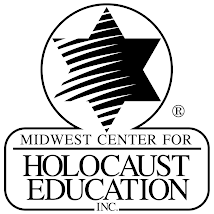In reflecting on the past year, I feel that using
the Echoes and Reflections curriculum with my 8th grade literature
students was very successful. This
program is divided into ten lessons.
Each lesson provides a historical context for the topic as well as
survivor testimony and primary source material, including photographs, diary
entries, poems and historical documents.
It is an excellent resource for material to use in your class. You certainly do not have to teach all of the
units by incorporating the survivor testimony would be a great way to bring the
individual aspect of Holocaust study to you students.
My students finished the lessons on studying the
Holocaust and antisemitism. They also
studied the history of Nazi Germany leading to the unit on the Final Solution. This program offers them an opportunity to
analyze photographs and propaganda material.
I conclude each unit with a test over the material and an ending
project.
In addition to Echoes and Reflections, my students
also read a variety of Holocaust literature.
Within their literature circle groups, they read The Diary of Anne Frank, A Coming Evil, the Boy Who Dared, Behind the
Bedroom Wall, Torn Thread, Play to the Angels, Someone Named Eva, Yellow Star,
I Have Lived a Thousand Years and All But My Life.
As a class they read Surviving Hitler by Andrea Warren.
This memoir chronicles the experiences of local Holocaust survivor, JackMandelbaum during his adolescent years in World War II Europe. There is an excellent teaching guide for this memoir on the MCHE web site.
I used Jennifer Jenkin’s lesson on a wall of remembrance quilt with my students as a culminating activity. This offered them an opportunity to reflect
on the material they studied and choose something that personally affected
them. The other students in the school
and many parents asked questions about the quilt squares and this lead to
discussions about the importance of the study of the Holocaust.
NOTE: The Midwest Center for Holocaust Education will be offering a training, conducted by an educator from Yad Vashem, over the Echoes and Reflections curriculum on July 25, 2012. All participants receive a complimentary copy of the curriculum! Enroll now!



